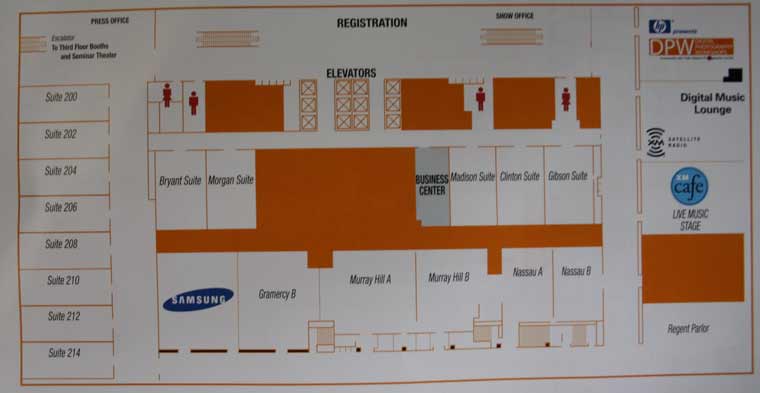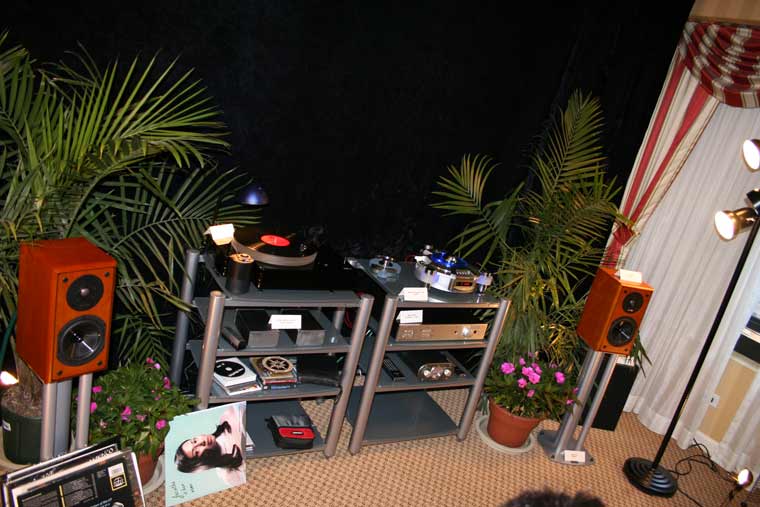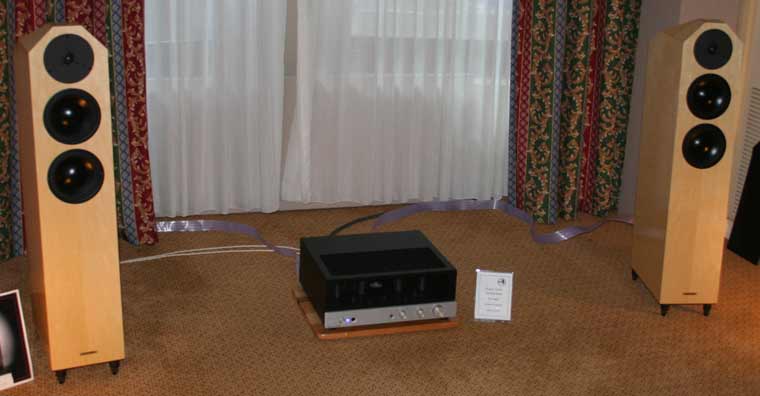| |
-
Well, yes, we did finally get our badges and made a
beeline to the Brinkmann / Marten Design / EMMlabs / HRS / Audience
room. We carry the Marten Design speaker line and wanted to see, hear,
and touch the new, better looking piano black Duke / Ellington speaker.
We also wanted to see and hear the Brinkmann Balance turntable, which we
are expecting to arrive here at our shop any day thank you very much.
The Duke / Ellington two piece speaker looked very nice, much better
than it had in previous incarnations. It has the standard Marten Design
vertical grooves in the front and the top and bottom pieces fit together
in a very aesthetic (to us) fashion. We are always struggling with the
looks nice versus play nice dilemma - always choosing equipment that
plays (sounds) nice, but darn don't we wish more things that played nice
looked a little bit nicer too. So we were both pleasantly surprised with
the quality of the new look.
As for the look of the turntable... Well, Neli and everybody else thinks
it looks great. Me, I do not think I can judge this, because, you know,
I am not sure I have ever seen a turntable I thought did not look great,
at least not a commercial one. Maybe I am just easy to please. The fit
and finish on the Brinkmann, however, an area where turntables do differ
widely, is second to none.
There was also a refurbished Thorens turntable in this room. It was a
very simple, aesthetic design compared to the refurbished Thorens in the
Lamm / Damoka room. We never got to hear this turntable,
The sound? Weak, congested, a little bright (it sounded a LOT better in
just 24 hours - and was even one of our best of shows).
-
The EMMlabs had not been
played before, nothing had a chance to settle in yet, etc. But we did
not care. We had a mantra this year:
DO NOT LISTEN CAREFULLY TO ANYTHING ON THE FIRST DAY
Our plan was to just take lots of pictures and say 'hi' to everybody the
first day.
On to the next room.
-
This is the most enjoyable part of a show for me - we've
only seen a room or two and, looking around, seeing signs for lots and
lots of room that we want to hear. Always with that hope. That the next
room will sound so excellent that it will blow our previous benchmarks
out of the water. And it wouldn't be such a bad thing if it were cheaper
than our previous benchmark either.
By the end of the first day, we have seen all these 'likely suspects',
and is often the case have not been overly impressed. Then the rest of
the show consists of the much more difficult task of looking for
'unknowns' (unknown to us anyway) that sound really fantastic, at either
an unexpectedly low price point, or unexpectedly small footprint, or
maybe just plain fantastic. We also head back to the 'likely suspects'
to see if they have improved substantially, and usually because they do
sound pretty good and we periodically get tired of hearing systems that
are having a bad day and need to rest our ears some.
|
|








